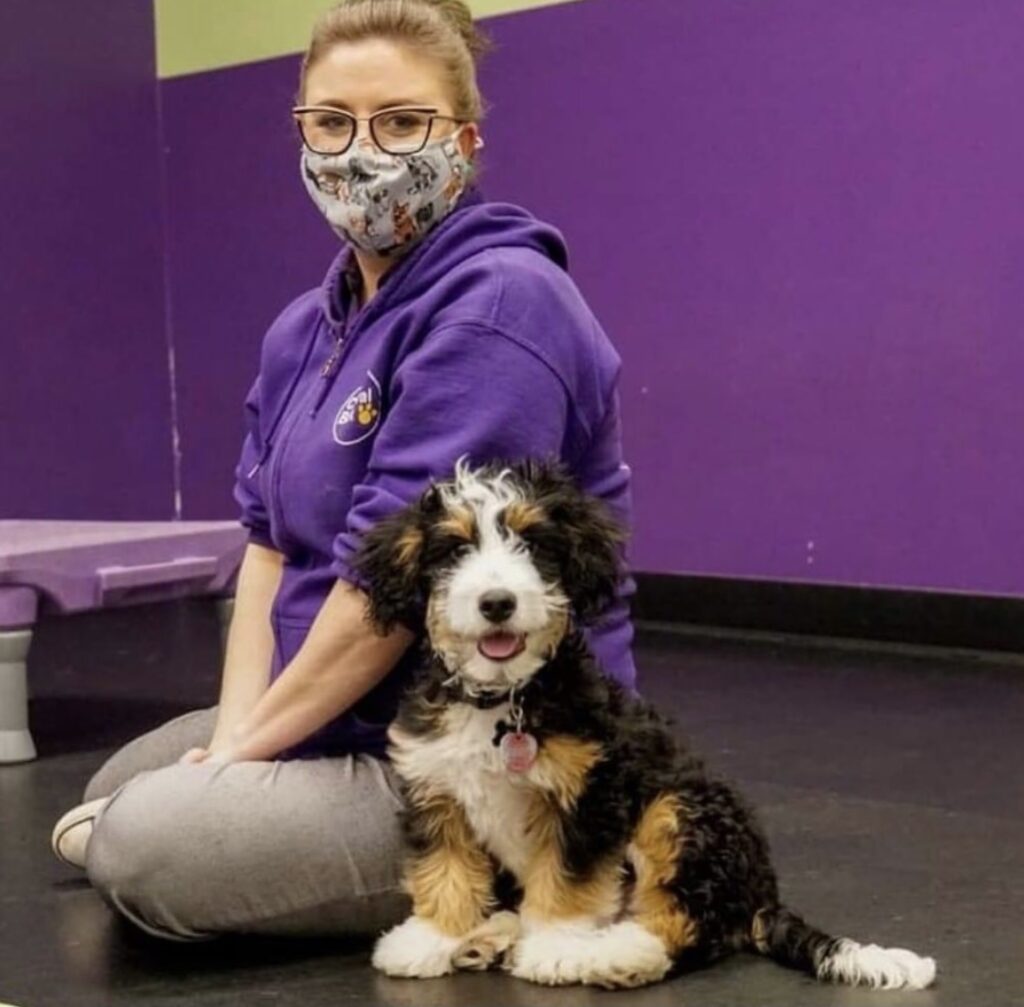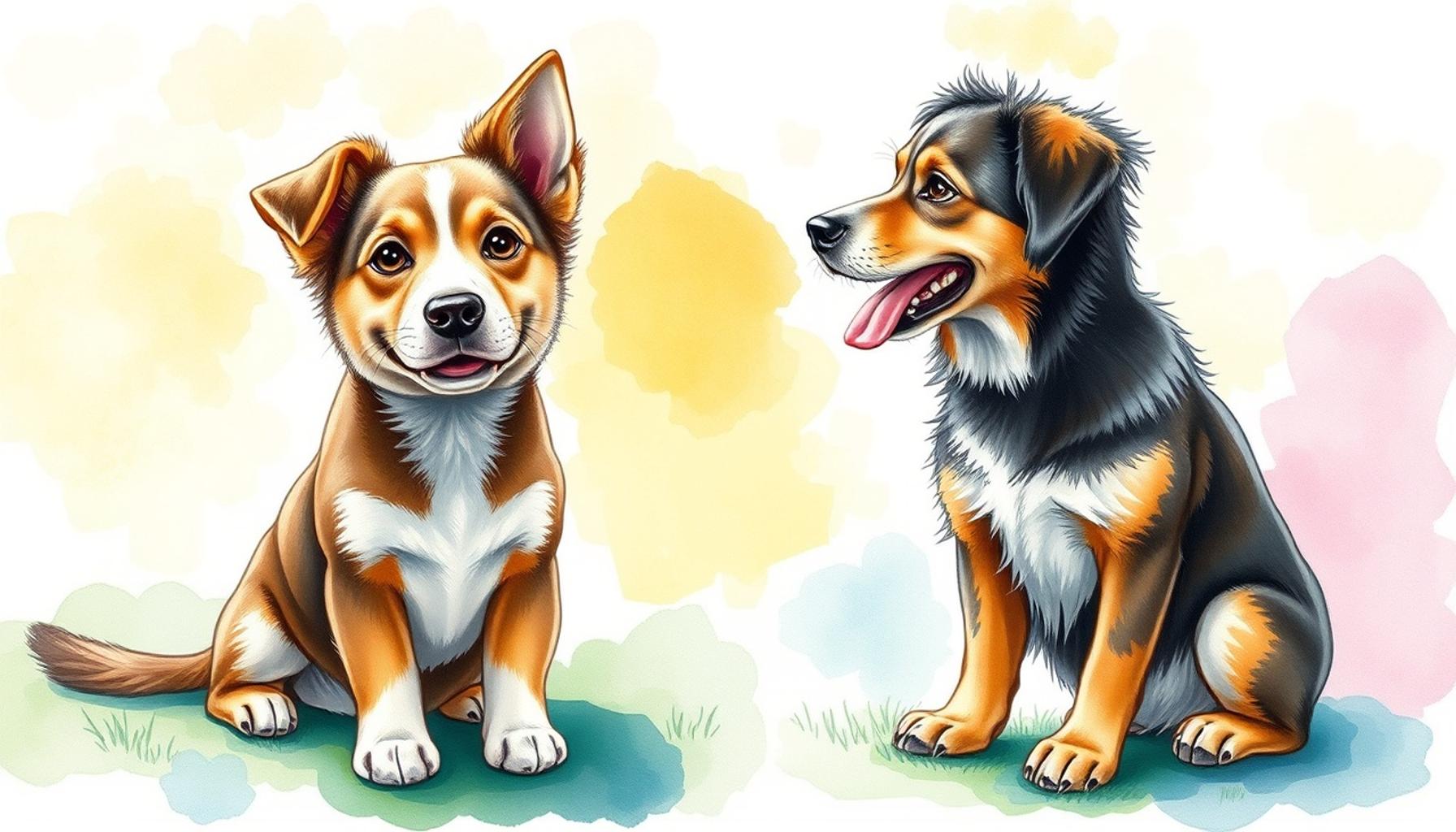Socializing Puppies Safe Interaction Techniques for Your Pet

Welcoming a puppy into your home is a joyful experience, but it also comes with significant responsibilities. One of the most crucial aspects of puppy ownership is socialization, which sets the foundation for your pup’s behavior and interactions throughout their life. Understanding the importance of safe socialization techniques can greatly enhance your pet’s confidence and help prevent future behavioral issues.
Socialization helps puppies learn how to engage positively with people, other animals, and various environments. This process not only contributes to their mental well-being but also promotes better health and happiness as they grow. Properly socialized pets are often more adaptable, friendly, and less prone to anxiety.
Top 5 Socialization Techniques
In the upcoming sections, we will explore the Top 5 techniques for effectively socializing your new furry friend. These strategies will guide you in creating enriching experiences that ensure safe interactions. Prepare to discover valuable insights that will enhance your puppy’s social skills and enrich your life together.
DON’T MISS: Click here to discover essential camping gear for your dog
Top 5 Techniques for Socializing Puppies: Preparing Your Pet for Safe Interactions
Socialization is a crucial aspect of raising a well-adjusted puppy. It plays an essential role in helping your furry friend develop the skills needed to interact positively with people, other pets, and their environment. In this article, we will explore the top five techniques for socializing puppies, so you can prepare your pet for safe interactions. Let’s dive into this rewarding journey!

5. Controlled Exposure to New Environments
Introducing your puppy to various environments is fundamental for socialization. Controlled exposure involves taking your puppy to different places, such as parks, pet-friendly stores, or coffee shops. Make sure these experiences are pleasant by allowing your puppy to explore new sights and sounds without feeling overwhelmed.
Puppies are naturally curious, and new environments can stimulate their senses positively when managed properly. When planning outings, consider the time of day; quieter times may be ideal to begin with to reduce potential stress. Gradually, as your pup gains confidence, introduce busier environments. This approach can prevent your pet from becoming anxious or sensitive to loud noises, such as traffic or crowds.
The goal is to expose your puppy to diverse settings so that they don’t develop fears or phobias. By identifying and addressing these reactions early, you can help your pup grow into a well-adjusted adult dog. Always observe your puppy’s body language—signs of stress like yawning, paw lifting, or excessive licking could indicate that the environment is too much for them at the moment.
4. Positive Reinforcement Training
Positive reinforcement training is a powerful technique to help your puppy learn good behaviors during social interactions. This method involves rewarding your puppy with treats, praise, or play when they respond positively to new experiences with people or other animals. For example, if your puppy sits calmly at the vet’s office or greets a new friend gently, immediately reward them to reinforce that behavior.
Short, consistent training sessions are more effective than long, drawn-out ones. Puppies have short attention spans, so maintaining their focus and enthusiasm is essential. Incorporate commands like “sit,” “stay,” or “come” during these sessions to reinforce obedience while socializing. Consistent practice helps puppies understand what is expected of them, reducing anxiety and fostering better behavior.
Moreover, using a variety of rewards keeps training exciting and interesting for your puppy. While treats are a common incentive, do not overlook the effectiveness of verbal praise or playtime. By linking positive outcomes with desired behaviors, you instill a pattern of good conduct.
3. Playdates with Vaccinated Dogs
Arranging playdates with vaccinated dogs is another excellent way to provide quality socialization for your puppy. Engaging in supervised play with other healthy dogs allows your puppy to learn boundaries, communicate properly, and socialize effectively with their peers.
To ensure these interactions are beneficial, choose dogs known for their friendly demeanor and experience with puppies. A well-matched playmate can teach your puppy subtleties like when to play gently or when to back off—skills that rely on reading canine body language and responding appropriately.
During these playdates, supervise closely for any signs of stress or aggression. For instance, pinned-back ears or raised hackles indicate discomfort. Should play become too exuberant, step in to calm the situation and redirect their focus to a more tranquil activity. This helps them to learn and practice critical social cues in a safe, controlled environment.
2. Puppy Training Classes
Enrolling your pet in puppy training classes provides structured and safe socialization options. These classes typically offer a range of activities designed to expose puppies to different noises, people, and environments while under the supervision of experienced trainers.
Training classes not only support socialization but equip pet parents with techniques to manage and understand their puppy’s behavior. These environments are safe for puppies to explore their inquisitive nature—everything from encountering vacuum cleaners to interacting with new people is introduced in a controlled manner.
Moreover, group classes allow puppies to bond with others, fostering friendships and understanding the dynamics of canine interaction. Before choosing a class, research local facilities, seek reviews, and possibly observe a session to ensure it aligns with your goals for your puppy.
1. Socialization Through Daily Activities
The most impactful technique for socializing puppies is through daily activities. Whether it’s a walk through the neighborhood, a vet visit, or a simple car ride, these routines offer natural socialization opportunities. Make an effort to introduce your puppy to a diverse mix of people of different ages and backgrounds, as well as other animals during these outings.
Daily engagement with the world helps solidify your puppy’s confidence and adaptability. For instance, exposing them to different sounds, surfaces, and sights is key to helping them become comfortable in a range of environments. It’s essential to reward and encourage calm behavior, reinforcing how they should interact positively with their surroundings.
As a puppy grows, these experiences accumulate to form a foundation of trust and security. Socialization doesn’t end in puppyhood; it should be an integral part of their lives as they develop into secure, well-rounded adult dogs.
In conclusion, by implementing these five techniques, you will help prepare your puppy for safe and enjoyable interactions throughout their life. Remember that consistency and positive reinforcement are key to successful socialization. This process offers not only the promise of a delightful companion but also the security of knowing your pet is ready to face the world confidently.
One of the most critical aspects of raising a well-behaved and sociable dog is the technique of socialization. This is especially important for puppies, as their formative experiences lay the groundwork for their behavior as adult dogs. In this segment, we will explore various techniques that ensure safe and positive interactions for your pet. First and foremost, introducing your puppy to a variety of environments is essential. This exposure can include different settings such as parks, urban areas, and even quieter locations. Each new environment provides unique stimuli, helping your puppy learn to adapt. By engaging in structured outings, you can reinforce positive behaviors while mitigating fearful reactions. This proactive approach cultivates adaptability and confidence in your dog.Additionally, pairing socialization experiences with positive reinforcement creates lasting impressions. When your puppy encounters new people, pets, or experiences, rewarding them with treats and praise for calm behavior establishes strong, positive associations. This method can effectively alleviate anxiety during interactions. Combining socialization with reward-based training techniques enhances the learning process.Furthermore, enrolling your puppy in socialization classes holds significant advantages. Not only do these classes allow for safe interactions with other puppies, but they also provide owners with expert guidance on how to navigate various situations. During organized sessions, puppies can engage in play while receiving immediate feedback about their behavior. Such environments foster both learning and fun, integral to developing social skills.It’s also beneficial to schedule playdates with other well-behaved dogs. This interaction can help instill proper play behavior and communication signals in your puppy. Observing how other dogs exhibit appropriate play styles teaches essential social cues, strengthening their understanding of canine etiquette. Building friendships during these early stages is vital; these interactions can lead to lifelong companions.Incorporating gradual introductions to unusual sounds and experiences is another effective method. From vacuum cleaners to the hustle and bustle of city life, increasing exposure increments can help your puppy become less fearful of unexpected stimuli. Creating a “soundproof” environment at first, then gradually introducing different noises can have profound effects. By desensitizing your puppy to new sounds and sights, you will equip them with the resilience needed to thrive in various environments.Finally, always remember to monitor your puppy’s body language during interactions. Understanding signs of discomfort or anxiety can help you intervene before negative experiences occur. Providing a safe space for your dog to retreat to, if they feel overwhelmed, reinforces the importance of their emotional well-being. Awareness of their signals enables a more harmonious relationship and confidence-building during social scenarios.In employing these socialization techniques, you prepare your puppy not just for dog parks but for a life full of enriching experiences. Embracing the nuances of social skills lays the groundwork for a happy, well-adjusted companion.
DISCOVER MORE: Click here for tips on enriching your cat’s night
Frequently Asked Questions on Socialization Techniques for Puppies
What is the ideal age to start socializing my puppy?
Puppies have a critical socialization period between 3 to 14 weeks of age. During this time, they are especially open to new experiences, making it an ideal period to introduce them to various environments, people, and other animals. Initiating socialization early can help prevent fear and aggression issues later in life. However, it’s crucial to remember that safe, positive interactions are key to effective socialization.
How can I ensure my pet interacts safely with other dogs?
To encourage safe interactions, begin by introducing your puppy to vaccinated, well-behaved, and calm dogs. It’s best to start in a controlled environment where you can closely monitor their behavior. Observing body language is vital; look for signs of stress or discomfort and intervene if needed. Puppy classes or playgroups are also excellent platforms for guided interactions under professional supervision.
What are some common signs of stress in puppies during socialization?
Recognizing the signs of stress in puppies during socialization can help prevent negative experiences. Common indicators include excessive yawning, lip licking, cowering, and tail tucking. Some puppies may even resort to hiding or growling. If you notice these signs, it’s essential to give your puppy space and gradually reintroduce them to the situation in a more controlled manner.
Can I socialize my puppy even if I missed the critical period?
Yes, although there may be challenges, socialization doesn’t have a strict cutoff point. Older puppies and adult dogs can still learn to be comfortable in various settings. It may require more patience and a slower approach, focusing on positive reinforcement and carefully orchestrated encounters. Consistency and time are vital in helping your pet adapt to new experiences.
DON’T MISS OUT: Click here for must-have camping gear for your dog!
Conclusion: Preparing Your Puppy for Safe Interactions
As we’ve explored throughout this article, the journey of socializing your puppy is one that requires patience, consistency, and a strategic approach. From understanding the importance of early socialization to employing techniques that ensure safe interactions, preparing your pet for the world beyond your home is crucial for their development and well-being.
First and foremost, recognizing the importance of gradual exposure cannot be overstated. Introducing your puppy to different environments, people, and other animals in a controlled manner helps build their confidence and adaptability. Each new experience should be positive, reinforcing their ability to face unknown situations calmly.
Top Takeaways for Effective Socialization
- Start Early: The earlier the socialization process begins, the better. Puppies are most receptive to new experiences in the first few months of life.
- Variety is Key: Expose your pet to a wide range of stimuli, including different sounds, sights, and textures.
- Consistency Matters: Regular and repeated positive experiences help reinforce good behaviors and reduce anxiety.
- Observe and Adapt: Pay attention to your puppy’s body language. Adjust interactions based on their comfort level.
- Professional Guidance: Consider professional training sessions or socialization classes for structured exposure and learning.
Ultimately, socialization is not just about making your puppy sociable but also about creating a well-rounded pet that feels secure and comfortable in any situation. This investment in your pet’s early life sets the foundation for a future filled with joyful and safe interactions. As responsible pet owners, it is our duty to ensure that these growing experiences are met with care and diligence, paving the way for a harmonious coexistence with the world around them. For those seeking further insights, numerous resources and expert guidance are available to provide actionable and informed strategies tailored to individual pet needs.


